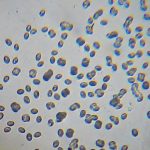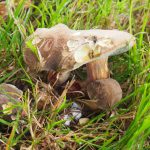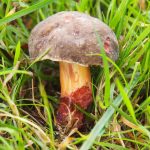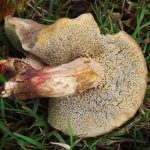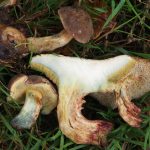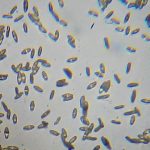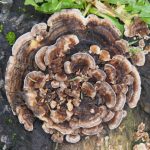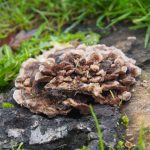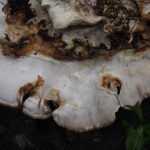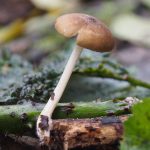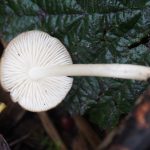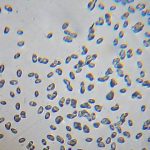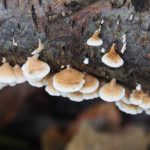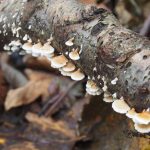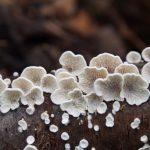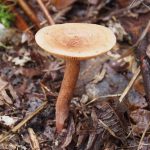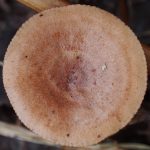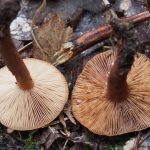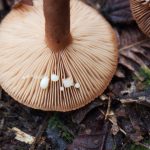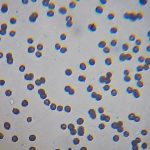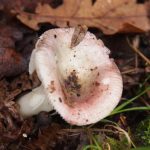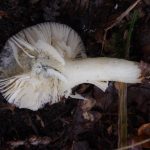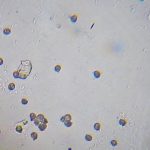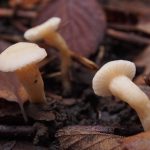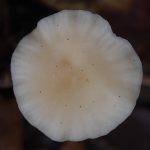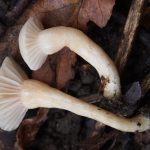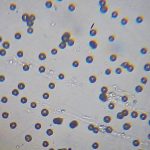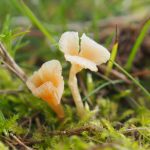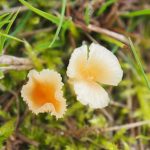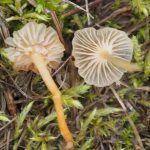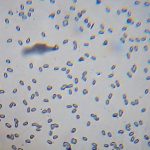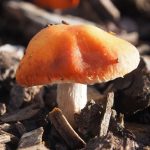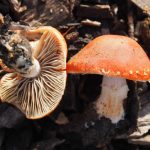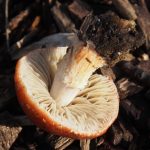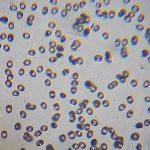It is the fate of mushroom hunters to sometimes encounter things that they cannot identify, despite making every possible effort. Although I have many mushroom identification books, the one I use most is the Collins Fungi Guide (Buczacki) simply because it lists more species than any others, over 2400. But of course, it isn’t complete and doesn’t include many rare ones and foreign invaders. On this foray I found two specimens that I don’t recognise and can’t find in any of my books. One is a small innocuous looking single specimen growing from the end of a twig. It looks like Hydropus floccipes (which I’ve never encountered) but the spore shape is wrong. That has spherical spores whereas mine are elliptical or slightly bean shaped. I can’t find any other species with the right characteristics. The other species that I can’t identify is a small, nearly pure white one with a waxy look, growing in woodland. There’s quite a few mushrooms like that but none that I can find with spherical spiny spores. The main groups that have such spores are Brittlegill (Russula), Milkcap (Lactarius) and Deceiver (Laccaria). It’s nothing like the first two but does have the general appearance of a Deceiver, except that none of those are white.
Mycena mirata is another small Bonnet mushroom but new to me. The Suede Boletes were growing in a cluster which is very unusual for Boletes. Turkeytail is maybe the most common fungus in the country but this was an attractive rosette. Plicatura crispa is a very interesting find. This species has been confined to Scotland and the north but is apparently travelling southwards. Online I found just one record in the south, from East Susses and it’s definitely this species, as the underside with forked folds is unmistakable. Oakbug Milkcap is very common and I see it often. Pelargonium Brittlegill is a rather speculative identification as I only found one specimen and didn’t pay enough attention to details such as taste and how much the cap will peel. But it’s a nice pinkish little thing! Orange Mosscap I also see often. Redlead Roundhead is a striking orange mushroom that I haven’t seen before. It’s thought to have come from abroad and now is becoming more common in woodchip mulch environments like this.



